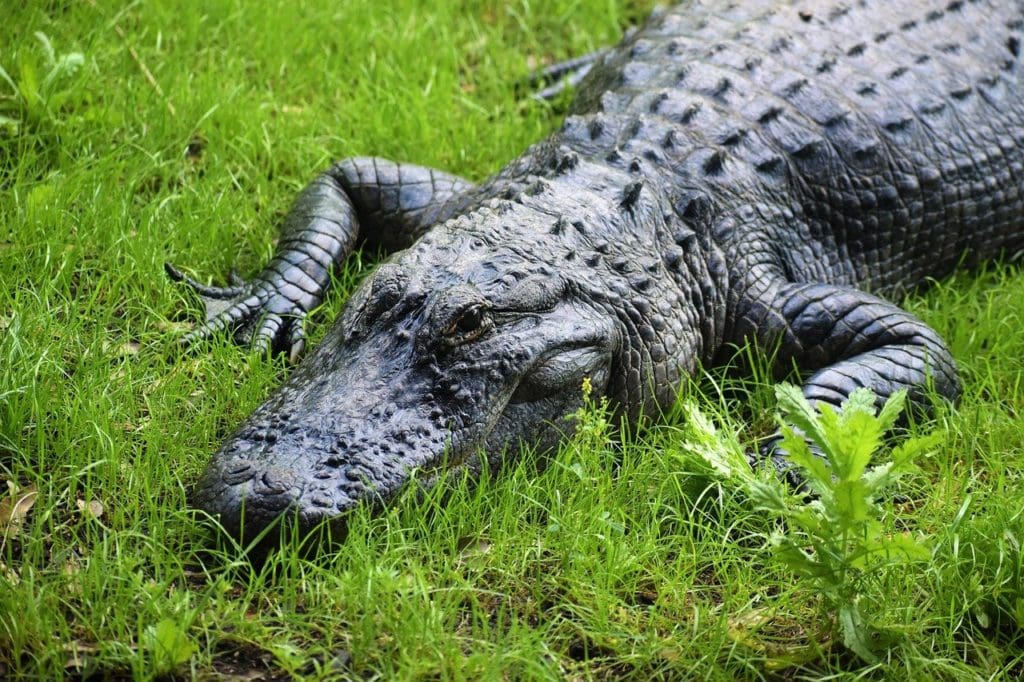
Alligators and crocodiles are some of the oldest surviving species in the world. They were here during the time of the Dinosaurs and will probably still be here long after we are gone. They are an amazing species that call the Lone Star State home.
Texas is one of the homes of the American Alligators, which are the only species present in North America. In addition, American alligators are one of only two alligator species in the world. The other is the Chinese alligators.
We will look at the American alligators that live in Texas and tell you everything you need to know about them.
You May Also Like: Largest Alligator In Florida With Facts And State Records
The American Alligator
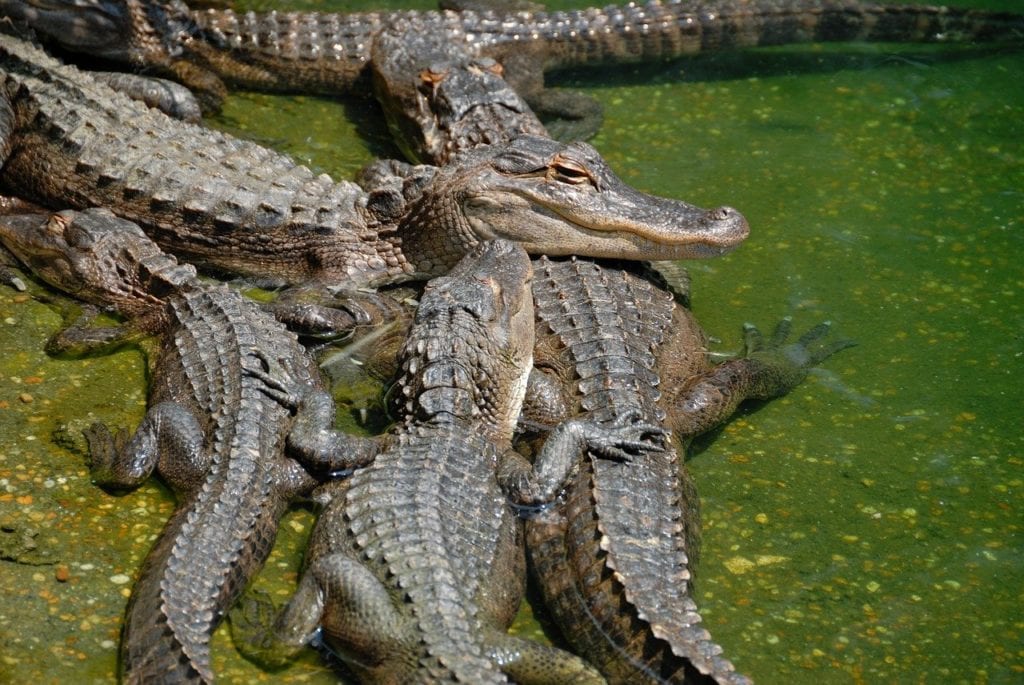
The American Alligator, also known by its scientific name Alligator Mississippiensis, is a large semi-aquatic reptile related to crocodiles. Alligators are native reptiles to Texas, and even though other regions of the country are home to crocodiles, alligators are the only species in the state.
You can find American alligators in the Sabine River East of Texas, down past the coastal marshes in the Gulf of Mexico. These reptiles also live near the Rio Grande and the west of Interstate 35. Their range spans 120 counties in Texas, and the largest population is in the Gulf’s Coastal Plains.
Seeking habitats that they prefer, they are primarily confined in the Eastern part of Texas, where lakes, marshes, and swamps provide suitable environments.
Description
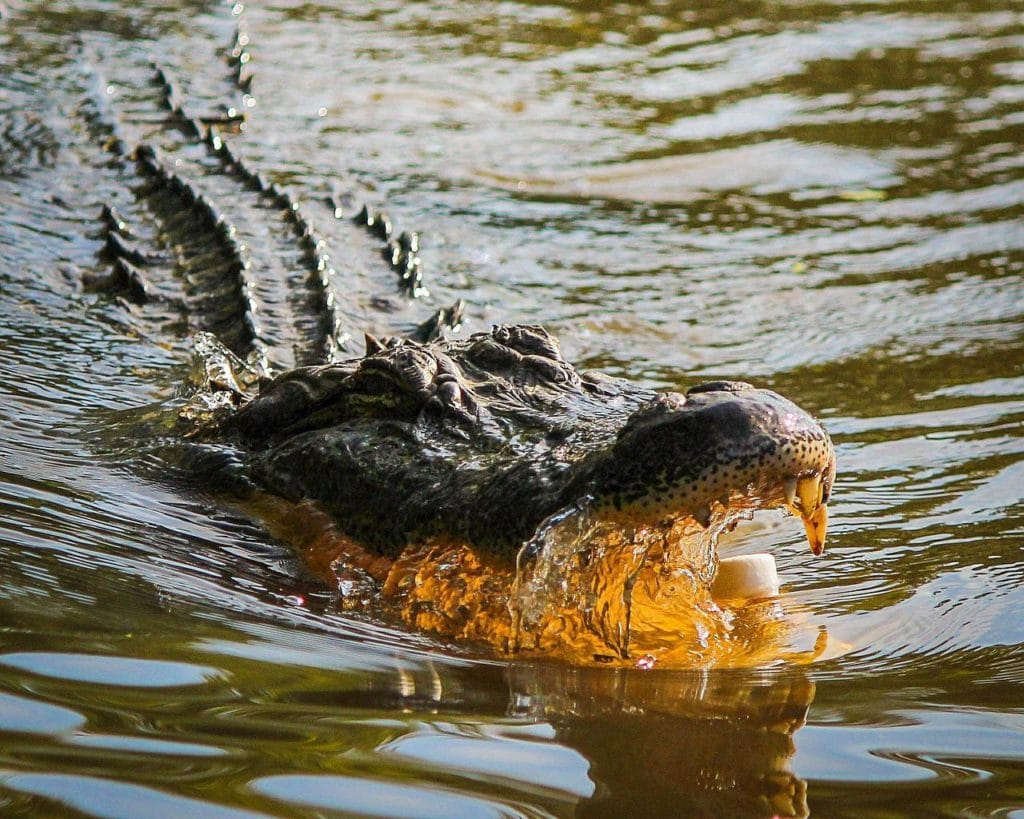
American alligators are the largest reptiles in Texas and North America. They have long, rounded snouts with upward-facing nostrils that help them breathe while still concealing their bodies underwater.
This helps them sneak up on their prey by swimming undetected and ambushing them. They grab prey with powerful jaws with as many as 80 sharp teeth. The teeth and jaws aid in drugging prey underwater to drown and incapacitate them for easy feeding. They also help in shredding prey to more manageable pieces they can swallow.
An interesting fact about American alligators’ teeth is that they grow new ones when old ones wear down.They can go through 3.000 teeth in their lifetime.
American alligators’ snouts are U-shaped, and the upper row of teeth remains exposed even with their snouts closed.
Their eyes are on top of their heads, where it’s easier to see their surroundings. Like their upward-facing nostrils, they are the only exposed parts while sneaking up to prey in water.
Moving further down their body, they have four short limbs. The front limbs have four toes, while the back limbs have only four webbed toes for easy swimming. Though, the short limbs should not fool you into thinking that gators are slow. They are fast sprinters but tire quickly. Don’t approach one thinking you can outrun it if it turns to you.
Covering their backs are armored bony plates, known as osteoderms or scutes. This protective armor gives them a rough exterior that is hard to penetrate.
American alligators have long, thick tails with protruding scales that run from their backs to the tip of the tails.
Baby American alligators are about eight to nine inches long when they hatch. At this stage, both females and males grow at the same rate, but differences in size start to appear as they grow older.
At ten years, males are about eight feet long, while females are seven or six feet. At 20 years, males can be eleven feet and females eight feet long. As the trend suggests, males are larger than females, and not only that, they also get to live longer.
Most of the oldest living alligators on record have been males.
Diet
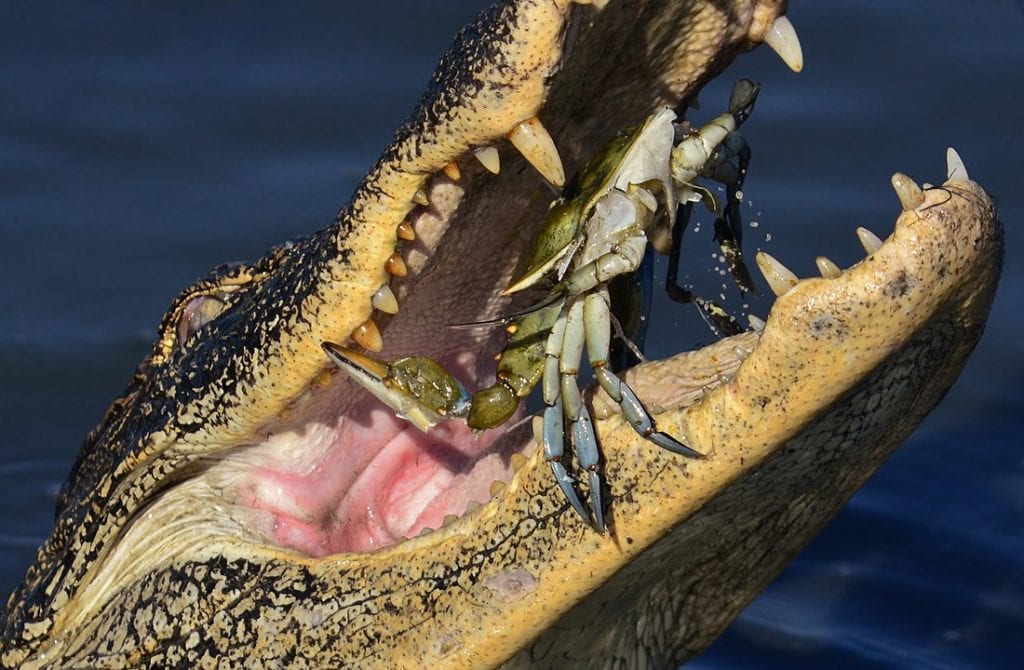
This comes as no surprise, but alligators are carnivorous. They are apex predators that rest at the top of the local food chain. Their sizes determine the type of food they feed on, with the rule of thumb being that the larger the gator, the larger the prey it can hunt.
Primarily, their diet consists of fish, turtles, lizards, snakes, birds, small animals, and amphibians. However, despite being carnivorous, they have been spotted eating fruits from grape and elderberry trees.
Baby alligators feed on spiders, insects, shrimp, and crabs and progress to larger prey as they also get bigger.
Breeding
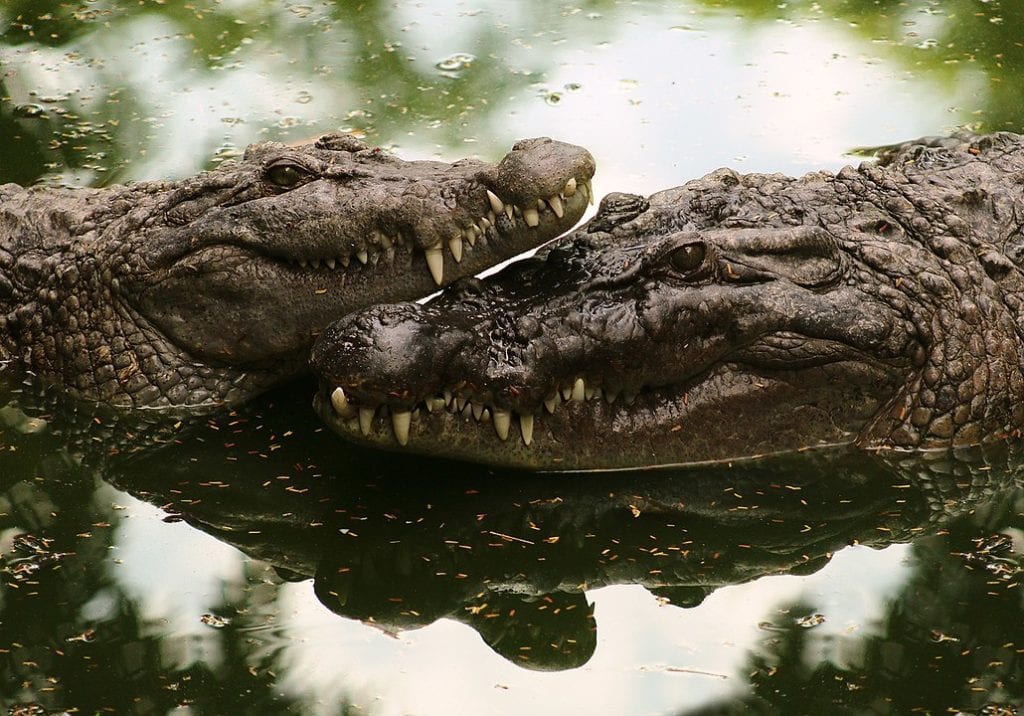
American alligators take time to reach sexual maturity for reptiles and wild animals. They reach maturity when they are about six feet long, which is when they are about ten to twelve years old.
Males start courting females in April by roaring and making alligator hisses. Generally, in May, the males circle and mount the females in the cover of darkness and mate.
Afterward, females start to prepare their nests using local vegetation. The nests are big and measure about two to three meters wide and a meter high. They then lay about 35 to 50 eggs around June through July.
The females then cover the eggs with the vegetation and let the heat from the decaying vegetation incubate the eggs. Finally, females stay guard at the nest and protect the eggs until they hatch approximately 65 days later.
An interesting fact about alligator egg incubation is that the sex of the offspring is determined by the temperature of the area the egg lay in the nest. If it was hot, the offspring is a male, if it was cool, female.
By the end of August, baby alligators start making high-pitched noises while hatching, which triggers the mom to uncover the nest. This makes it easier for the young ones to emerge from the nest and join their mother. They usually stay with their mothers for the next two years until they are larger and not too vulnerable to predators.
One more interesting fact about American alligators is that they are the only reptile species that look after their young.
Life Spans
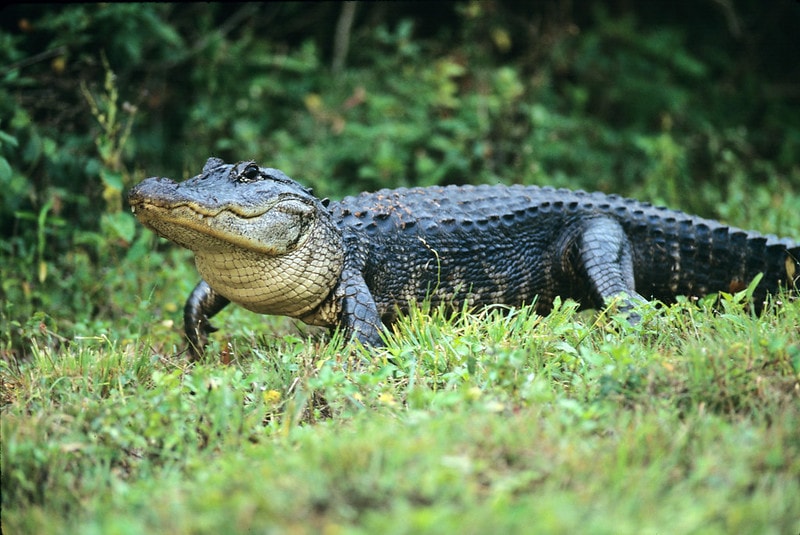
The most dangerous period for American alligators is during their infancy. Then, they are vulnerable to predators such as birds, wild dogs, and even other alligators. But if they make it to four feet long, they cease to have natural predators except for humans and larger alligators.
From his point, they can grow to 50 years old in the wild and even longer in captivity.
American alligators burrow large gator holes to shelter in extreme cold and sweltering drought seasons. These alligator holes fill with water and provide refuge for other animals and birds.
Even though this might seem like hibernation, alligators do not hibernate. However, in these adverse conditions, they undergo periods of dormancy called brumation. Just one of the life adaptations that has helped them survive this long.
You May Also Like: All 25 Types Of Crocodile Species: ID Guide With Facts And Picures
Alligator Management History in Texas
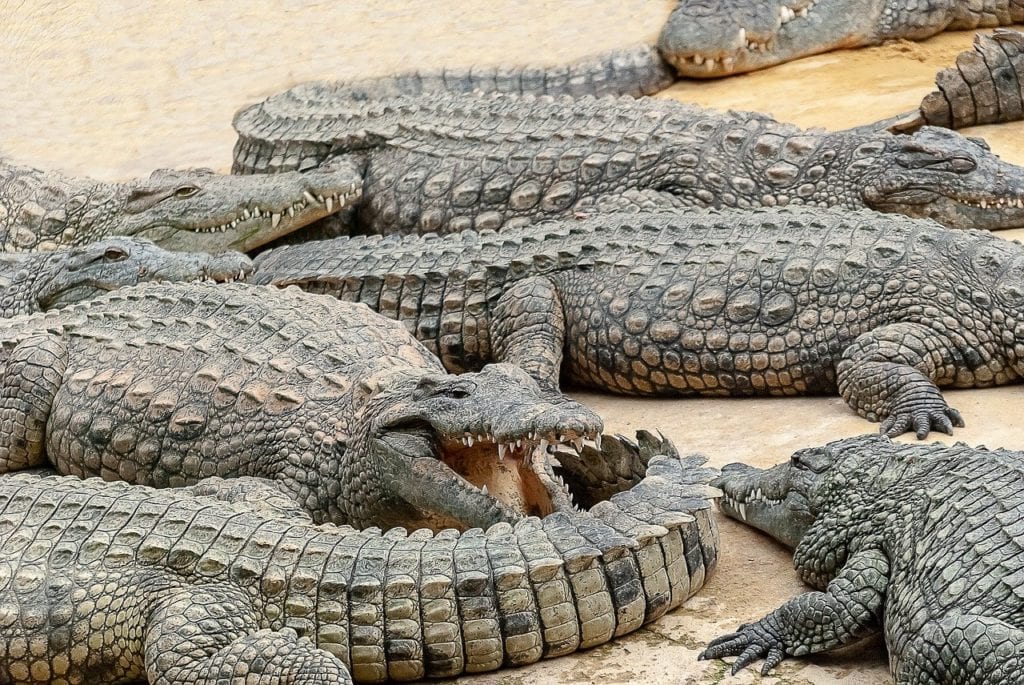
Back in the 1960s, American alligators almost went extinct in Texas. Alligator hunting was unregulated and nearly wiped out the species. But the state implemented complete protection for the resilient species, and their numbers bounced back to unendangered levels. And in 1985, the species was deregistered from the endangered species list in Texas.
Since then, the state has eliminated the unregulated alligator hide market and has put measures to monitor the hunting and sale of gator products.
Since alligator populations close to human settlements can become a nuisance, they have been confined to parks in the eastern part of the state. This is also due to the availability of more suitable gator habitats, but it also reduces human interaction.
Texan authorities define a nuisance alligator as an alligator that ravages livestock, pets, or causes a threat to humans. It’s good to note that only the Texas Park and Wildlife authority has the right to deem an alligator a nuisance due to their protected status. If you have an issue with a gator, you should get in touch with them, and they will help you out.
American alligator hunting is also seasonal and highly regulated. For example, hunters can only hunt from September 10th to September 30th. In addition, hunters have to get a hunting permit from the county and can only kill a certain number of gators in a day.
This has helped Texas manage its American alligator populations and ensure they never face extinction again.
Departments such as TPWD Wildlife Division help in monitoring gators in the state. Their role includes occasionally conducting gator census and keeping records of nests, hatchlings, and hunted numbers. This assists in determining how the populations in the state are doing and helps inform authorities on action to keep numbers steady.
You May Also Like: Apex Predator List: The Top 12 Predators At The Top Of The Food Chain
American Alligator Products

American alligators are popular for their meat and hides. Game meat lovers treasure the succulent cuts offered by wild alligators. Some people also deem particular cuts as ointments and believe they are highly nutritious and have healing powers.
Besides their meat, fashion brands use alligator hides to make different items such as shoes, bags, and belts. The hides’ outstanding quality of material and their high desirability in the market helps fashion brands make a killing.
This helps make alligators a valuable resource for the State of Texas and all who benefit from exploring this natural resource.








